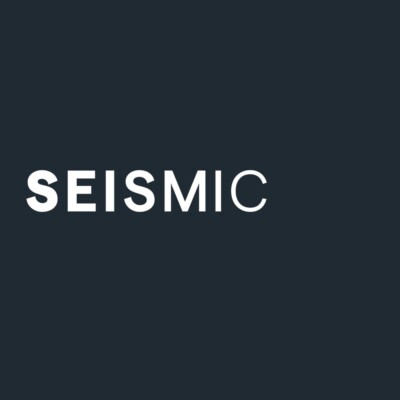
The Corporate Sustainability Reporting Directive (CSRD) marks a significant shift in sustainability reporting in the EU. It requires large companies to report on a wide range of sustainability topics as part of their financial reporting. As organisations adapt to this new regulatory landscape, understanding what constitutes effective CSRD governance is vital. With over 1,100 data points to grapple with, good governance is the only way for large and listed businesses operating in the EU to manage the CSRD obligation effectively.
The shift to transparent sustainability
CSRD has taken a big step up from its predecessor, the Non-Financial Reporting Directive (NFRD), by expanding the scope and depth of what businesses are required to disclose. While NFRD laid the foundations for sustainable reporting, CSRD demands a new level of engagement and strategic focus.
Some key metrics for the new CSRD reporting include:
- Environmental impact including greenhouse gas emissions, energy consumption, and waste management
- Social factors like employee diversity, occupational health and safety, and respect for human rights throughout the value chain
- Governance aspects such as board composition, executive compensation, and anti-corruption measures
CSRD has been designed to standardise sustainability reporting across all businesses, helping to embed and build meaningful sustainability business strategies through identifying and addressing an organisation’s key sustainability risks and opportunities.
“CSRD is prescriptive, not descriptive, and it’s all about transparency, it’s not about performance.” – Rebecca Addison, Senior Sustainability Analyst, Seismic
How to get your governance on board with CSRD
1. Board-Level Oversight. The board of directors plays a pivotal role in CSRD governance. This should involve setting up a dedicated sustainability committee to provide regular, focused insight and ensure targets are progressing, as well as introducing sustainability into core strategic discussions. Boards shouldn’t look at CSRD as a compliance burden, but as an opportunity to create lasting value.
2. Cross-Functional Collaboration. CSRD governance means breaking down organisational silos. Cross-functional teams should be established to bring together expertise from finance, HR, operations and any relevant departments. To create a cohesive approach to sustainability management and reporting, teams need to have clear objectives and protected time to communicate.
3. Credible Data Management. Investing in data management systems capable of handling sustainability information with the same rigour as financial data is essential for credible CSRD reporting. The right technical infrastructure is crucial to meet CSRD requirements.
4. Capacity Building. Developing training programs to build new competencies, and understanding at every level of the organisation, is key for effective CSRD implementation. Where capacity is limited , external experts can provide essential support. A 2024 study by the European Financial Reporting Advisory Group concluded that, “hiring experts or upskilling existing employees fosters internal expertise on both sustainability and reporting processes.” – EFRAG
5. Stakeholder Engagement and Materiality Assessment. Conducting a thorough double materiality assessment and engaging with stakeholders to prioritise key sustainability issues; this means not just asking for input, but communicating progress and challenges transparently.
6. Integrated Risk Management. Sustainability risks need to be fully integrated into the company’s overall risk management framework. Regular risk assessments and scenario planning can help boards and management teams anticipate and prepare for potential sustainability challenges, ensuring CSRD compliance and overall business resilience.
The commercial benefits of CSRD
It’s too easy for stakeholders to see CSRD compliance as a headache, but the commercial benefits shouldn’t be overlooked.
From a talent attraction and retention point of view, putting your commitment to sustainability in the spotlight provides a huge benefit, with more and more employees prioritising aligned morals and values in their long-term careers.
Looking long-term, as we transition into a low carbon economy, having a solid strategy already in place is only going to make businesses more resilient.
Another major benefit is financial. With the massive rise of sustainability-linked loans, companies with strong CSRD governance will find it a really useful tool to showcase their sustainability credentials. Having investor grade data easily available will make it easier to secure sustainability-linked loans and reduce existing debt.
One of the greatest values created by CSRD is found in the power of transparency. Clear CSRD reporting boosts reputation and strengthens relationships with stakeholders. CSRD’s value chain reporting is a huge, and very credible, way to build trust. By putting your business processes in the spotlight, from suppliers to end-users, you’re not only ensuring transparency but also uncovering hidden opportunities. It’s an invaluable tool for holistic business improvement.

Seismic’s approach to CSRD support
At Seismic, we understand the complexities of CSRD implementation. We understand the overwhelm and support all stages of implementation. Our approach to supporting your business includes:
1. Double Materiality Assessment. This includes a stakeholder mapping exercise within your value chain. Followed by a mixture of stakeholder interviews, focus groups and surveys in order to collect quantifiable data that will help to inform which topics under CSRD are most material to your business and therefore which topics you will need to disclose against. Double materiality assessment helps identify and evaluate the most significant financial, environmental and social issues for your business and stakeholders.
2. Gap Analysis. We then recommend conducting a comprehensive assessment of your current data collection and reporting capabilities and holding them up against CSRD requirements.
3. Strategy Development. Based on your gap analysis, we work closely with you to develop a CSRD implementation strategy that cleanly aligns with your business objectives.
4. Education and Capacity Building. We can provide training and support to help your team intricately understand CSRD requirements and build necessary competencies.
5. Human-First Service. We simplify complex CSRD requirements, making them more accessible and manageable for your teams. Our approach adapts to individual client needs – we can either take on the heavy lifting to streamline efficiencies, saving you time and resources, or provide lighter-touch support to help you leverage your internal capabilities effectively.
6. Implementation Support. We can assist in setting up governance structures, refining data processes, and conducting CSRD compliant double materiality assessments.
Turning compliance into competitive advantage
Effective CSRD governance is more than a compliance exercise; it is a strategic opportunity to create long-term value and build resilience. By using CSRD principles and seeking expert support, businesses can turn regulatory requirements into a solid framework for sustainable growth and stakeholder trust.
Whether you’re just starting your CSRD journey or you’re looking to shift your existing governance structures, remember that the path to effective CSRD governance is unique for each company. With the right approach and Seismic’s support, you can shift CSRD compliance into a major competitive advantage.
Get in touch with our experts today to explore the full potential of CSRD and how it can drive long term value for your business.


